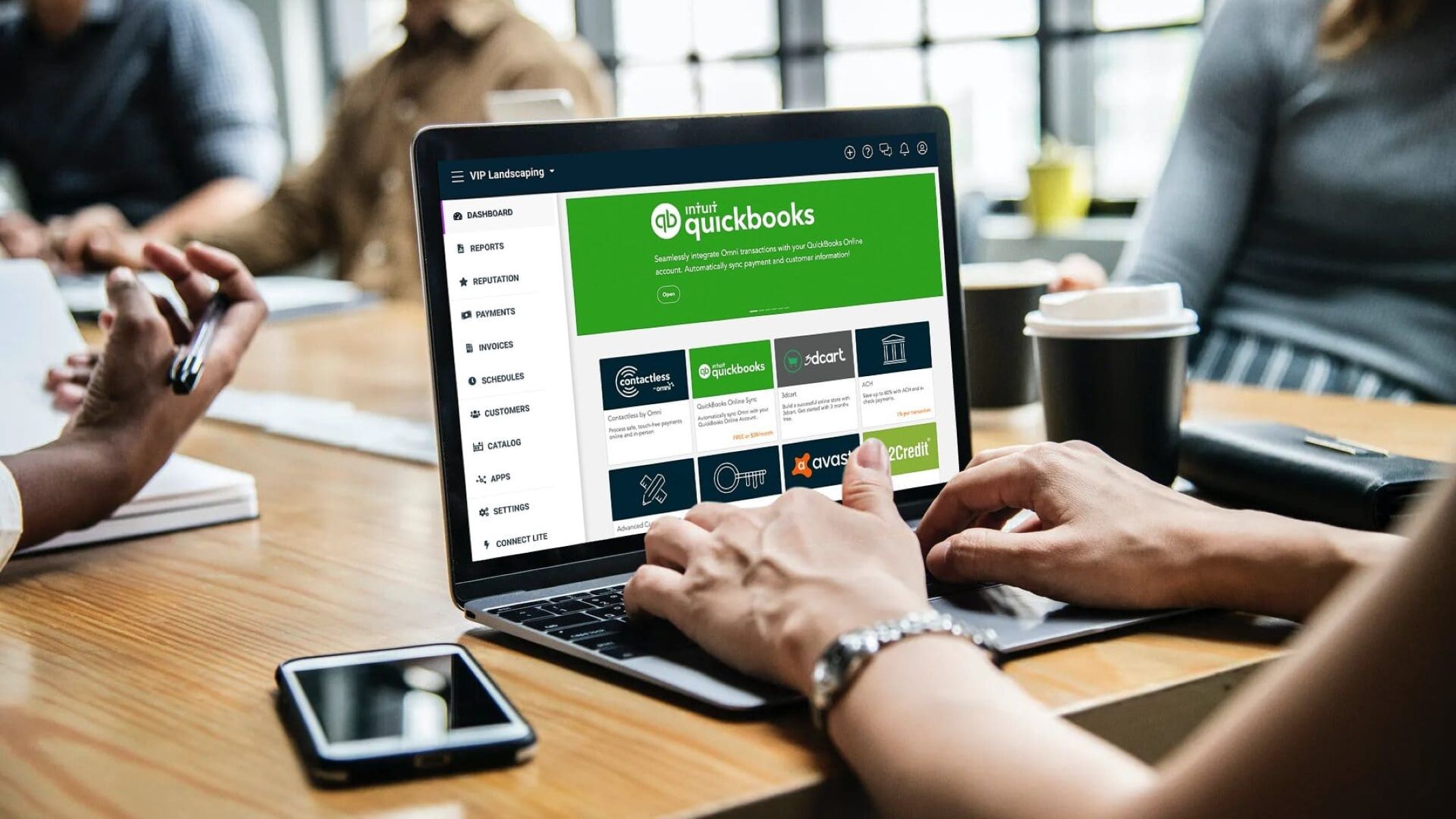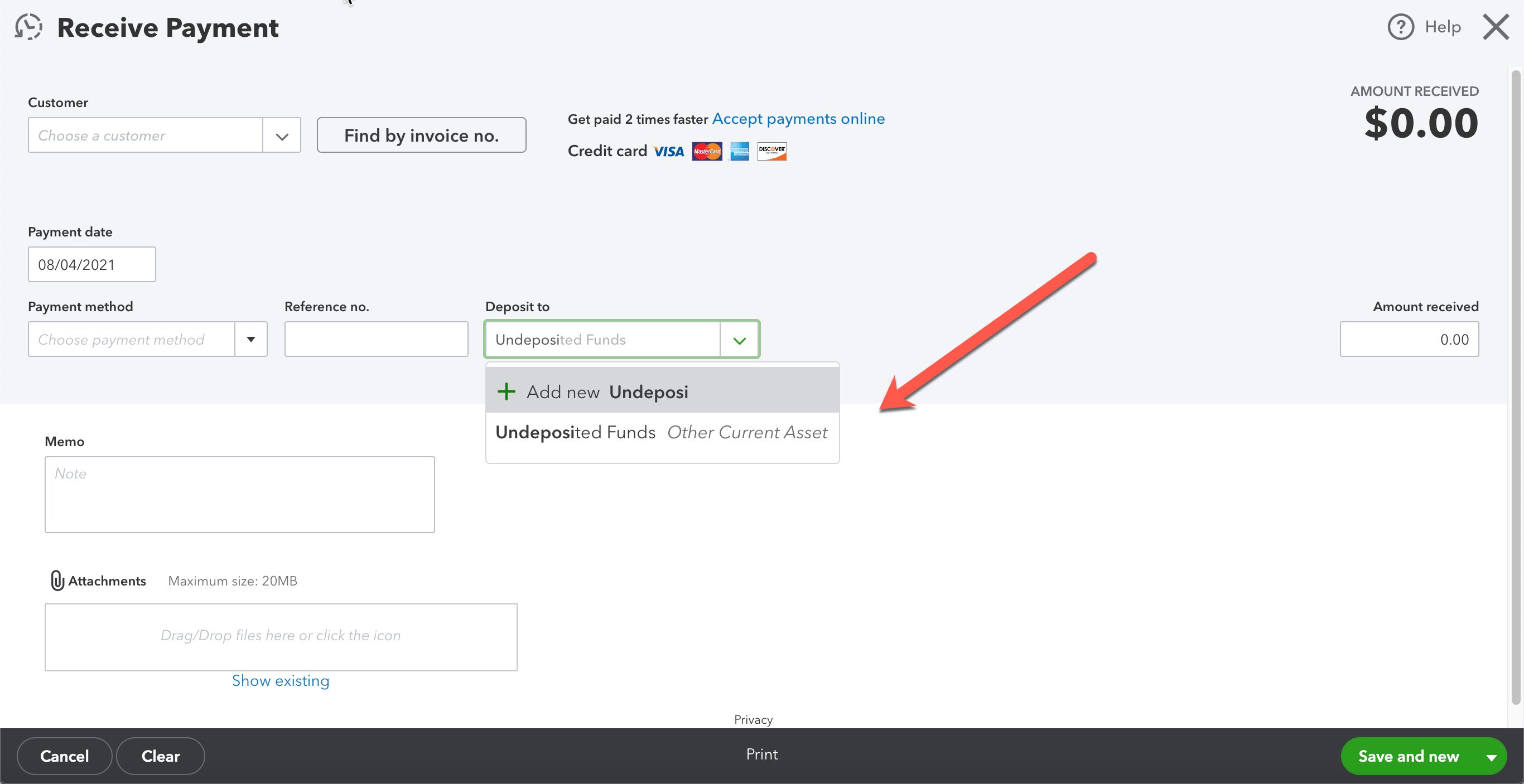Common Reasons Why Quickbooks Won’t Open
Quickbooks is widely used accounting software that helps businesses manage their finances efficiently. However, there are instances when users may encounter issues with opening Quickbooks. Understanding the common reasons behind this problem can help troubleshoot and find a solution. Here are some possible causes:
1. Damaged Quickbooks Installation: If the Quickbooks installation files are corrupted or incomplete, it can prevent the software from opening properly. Reinstalling Quickbooks can resolve this issue.
2. Corrupted Company File: A damaged or corrupted company file can cause Quickbooks to fail to open. Running the built-in Quickbooks File Doctor tool can help fix the file corruption issue.
3. Outdated or Incompatible Version of Quickbooks: Using an outdated or incompatible version of Quickbooks with your operating system can lead to opening issues. Ensure that you have the latest version of Quickbooks that is compatible with your system.
4. Windows System Issues: Problems within the Windows operating system, such as missing system files or registry errors, can interfere with Quickbooks’ functioning. Running system diagnostics tools or repairing the Windows system can help resolve this.
5. Insufficient System Resources: If your computer lacks the necessary resources, such as RAM or hard drive space, Quickbooks may struggle to open. Freeing up storage space and closing unnecessary programs can help alleviate this issue.
6. Conflicting Programs or Antivirus Software: Certain programs or antivirus software may conflict with Quickbooks, preventing it from opening. Temporarily disabling these programs or adding Quickbooks as an exception in your antivirus settings can help resolve the issue.
7. Network Connectivity Problems: If Quickbooks is unable to connect to the server or has network-related issues, it may not open properly. Checking the network connection and resetting the router or modem can help resolve this problem.
8. User Permission Issues: Insufficient user permissions can restrict access to Quickbooks, causing it to fail to open. Ensure that you have the necessary permissions to access and run Quickbooks.
9. Quickbooks File Locked by Another User: If another user has the Quickbooks company file open in multi-user mode, it can prevent other users from opening the file. Communicate with other users and request them to close the file to resolve this issue.
10. Data Corruption or Data Integrity Issues: Data corruption within the Quickbooks company file or data integrity problems can prevent Quickbooks from opening. Running data repair utilities provided by Quickbooks can help fix these issues.
By understanding these common reasons why Quickbooks won’t open, you can take appropriate steps to resolve the issue and get back to managing your finances efficiently. If the problem persists, it may be necessary to seek assistance from Quickbooks customer support or consult a professional technician specialized in Quickbooks troubleshooting.
Damaged Quickbooks Installation
A damaged Quickbooks installation can be a common cause of Quickbooks not opening properly. When the installation files of Quickbooks become corrupted or incomplete, it can prevent the software from functioning correctly. If you encounter this issue, here are some steps you can take to resolve it:
1. Uninstall Quickbooks: Start by uninstalling Quickbooks from your computer. To do this, go to the Control Panel, find the “Programs” section, and select “Uninstall a Program.” Locate Quickbooks in the list of installed programs, right-click on it, and choose “Uninstall.”
2. Remove Remaining Quickbooks Files: After uninstalling Quickbooks, it’s essential to delete any remaining files that may have been left behind. Navigate to the Quickbooks installation folder (usually located in C:\Program Files\Intuit), and delete the entire Quickbooks folder.
3. Download and Install the Latest Quickbooks Version: Visit the official Intuit website and download the latest version of Quickbooks. Ensure that you choose the edition that is compatible with your operating system. Run the installer and follow the on-screen prompts to complete the installation.
4. Validate Installation Files: Once the installation is complete, run the Quickbooks installation file validator. This tool will verify that all the necessary installation files are intact and not corrupted. If any issues are detected, the validator will attempt to repair or replace the damaged files.
5. Restart Your Computer: After completing the above steps, restart your computer. This will ensure that any changes made during the reinstallation process take effect.
If the Quickbooks installation files were the cause of the problem, following these steps should resolve the issue. However, if Quickbooks still does not open correctly, it may be necessary to seek further assistance from Quickbooks customer support or consult a professional technician who specializes in Quickbooks troubleshooting.
Corrupted Company File
A corrupted company file is another common reason why Quickbooks may fail to open. The company file contains all the financial data and records that you have stored in Quickbooks. If this file becomes damaged or corrupted, it can prevent Quickbooks from opening properly. Here are some steps to address this issue:
1. Run Quickbooks File Doctor: Quickbooks provides a built-in tool called Quickbooks File Doctor, which can help diagnose and repair issues with company files. Launch the tool and follow the on-screen instructions to scan and repair the corrupted company file.
2. Restore a Backup: If you have a recent backup of your company file, you can restore it to replace the corrupted file. Open Quickbooks, go to the File menu, select “Open or Restore Company,” and choose “Restore a Backup.” Follow the prompts to locate and restore the backup file.
3. Use Auto Data Recovery: Quickbooks has a feature called Auto Data Recovery that automatically creates a backup of your company file. If your current company file is corrupted, you can use the Auto Data Recovery backup to restore your data. Visit the Intuit website for detailed instructions on how to use this feature.
4. Send the Company File to Intuit Support: If the above steps do not resolve the issue, you can send the corrupted company file to Intuit Support for further assistance. They may be able to repair the file or provide alternative solutions to recover your data.
5. Create a New Company File: In some cases, creating a new company file and importing your data can help resolve the issue. Be cautious when taking this step, as it will require re-entering some information and may result in the loss of certain data. Consult with an experienced Quickbooks professional or Intuit Support before proceeding with this option.
If you suspect that your company file is corrupted, it is essential to take immediate action to restore it or seek help. Regularly backing up your company file can help prevent data loss and minimize the impact of file corruption. Remember to always store backups in a secure location separate from your working files.
Outdated or Incompatible Version of Quickbooks
Using an outdated or incompatible version of Quickbooks can lead to issues with opening the software. As technology advances, Quickbooks releases updates and new versions to ensure compatibility with the latest operating systems and provide bug fixes and enhancements. If you are experiencing problems opening Quickbooks, it may be due to an outdated or incompatible version. Here’s how you can address this issue:
1. Check for Updates: Open Quickbooks and go to the Help menu. Select “Update Quickbooks” to check for any available updates. If updates are found, download and install them. Restart Quickbooks after the updates are installed to ensure the changes take effect.
2. Verify System Requirements: Before updating Quickbooks, ensure that your computer meets the system requirements for the latest version. Visit the official Intuit website or refer to the documentation provided with your software to check the minimum system requirements. If your system falls short, consider upgrading your hardware or operating system.
3. Upgrade to the Latest Version: If you are using an older version of Quickbooks, it may be time to upgrade to the latest version. Visit the Intuit website or contact Quickbooks customer support to find out about available upgrade options. Back up your company file and follow the instructions provided to upgrade your software.
4. Use Compatibility Mode: If you are unable to update Quickbooks to a compatible version, you can try running Quickbooks in compatibility mode. Right-click on the Quickbooks shortcut or executable file, select “Properties,” and go to the Compatibility tab. Choose a compatible operating system from the drop-down list and enable compatibility mode.
5. Consult Quickbooks Support: If you are unsure about which version of Quickbooks is compatible with your system or need further assistance, contact Quickbooks customer support. They can provide guidance on the appropriate version to use and help troubleshoot any compatibility issues.
Using an outdated or incompatible version of Quickbooks can result in performance issues, errors, and the inability to open the software. Staying up-to-date with the latest version ensures you have access to the latest features and improvements while maintaining compatibility with your system.
Windows System Issues
Windows system issues can sometimes interfere with the proper functioning of Quickbooks, leading to problems with opening the software. Issues such as missing system files, registry errors, or conflicts with other programs can prevent Quickbooks from launching. To address Windows system issues, consider the following steps:
1. Run System File Checker (SFC): The System File Checker is a built-in Windows tool that scans for and repairs missing or corrupted system files. To run SFC, open the Command Prompt as an administrator, then type “sfc /scannow” and press Enter. Allow the tool to complete the scan and repair any detected issues.
2. Check for Windows Updates: Keeping your Windows operating system up to date is essential for optimal performance and compatibility with applications like Quickbooks. Go to the Windows Settings, select “Update & Security,” and click on “Check for updates” to install any available updates. Restart your computer after the updates are installed.
3. Perform a Clean Boot: Sometimes, background services or processes may interfere with Quickbooks. Performing a clean boot helps identify and disable conflicting programs or services. Open the System Configuration utility by pressing the Windows key + R and typing “msconfig.” In the Services tab, check the “Hide all Microsoft services” box and click “Disable all.” In the Startup tab, click “Open Task Manager” and disable any startup programs. Restart your computer and try opening Quickbooks.
4. Repair Quickbooks: Quickbooks provides a repair tool that can fix common issues with the software. Open the Control Panel, go to “Programs and Features” or “Add/Remove Programs,” find Quickbooks in the list, and select “Repair.” Follow the on-screen instructions to complete the repair process. Restart Quickbooks afterwards.
5. Check for Conflicting Programs: Certain programs or antivirus software can conflict with Quickbooks and prevent it from opening. Temporarily disable any antivirus or security software and try launching Quickbooks again. If it opens successfully, add Quickbooks as an exception in your antivirus settings or consider switching to a different antivirus program.
6. Reinstall Quickbooks: If none of the above steps resolve the issue, you may need to reinstall Quickbooks. Before doing so, make sure to back up your company file and any important data. Uninstall Quickbooks from your computer, download the latest version from the official Intuit website, and follow the installation instructions.
If you continue to experience issues with opening Quickbooks due to Windows system problems, it is advisable to seek technical assistance from Quickbooks customer support or consult a professional technician who specializes in resolving Windows-related issues.
Insufficient System Resources
Insufficient system resources can cause Quickbooks to struggle with opening or running properly. When your computer lacks the necessary resources like RAM (Random Access Memory) or hard drive space, it can impact Quickbooks’ performance and prevent it from loading. To address this issue, consider the following steps:
1. Free Up Storage Space: Check your computer’s hard drive space and ensure that you have enough available. Delete any unnecessary files, such as temporary files, old downloads, or files from unused applications. You can also consider moving larger files to an external storage device to free up space on your main hard drive.
2. Close Unnecessary Programs: Running multiple applications simultaneously can consume system resources. Close any unnecessary programs or background processes that may be using up valuable resources. This will allocate more resources to Quickbooks and improve its performance.
3. Increase Virtual Memory (Page File): Virtual memory, also known as the page file, is a space on your hard drive that the operating system uses as an extension of physical memory (RAM). If your RAM is limited, increasing the size of the virtual memory can help compensate for the shortage. To adjust the virtual memory settings, go to the System Properties menu in the Control Panel and navigate to the Advanced tab.
4. Upgrade System Hardware: If your computer consistently struggles with insufficient system resources, it may be time to consider upgrading your hardware. Adding more RAM or upgrading to a faster hard drive can significantly improve Quickbooks’ performance and prevent resource-related issues.
5. Optimize Quickbooks Performance: Quickbooks provides built-in tools to optimize performance and resources. Open Quickbooks and navigate to the File menu, select “Utilities,” and click on “Optimize Quickbooks.” Follow the prompts to optimize the database and improve resource allocation.
6. Limit Background Processes: Reduce the number of background processes running on your computer to minimize resource consumption. Use the Task Manager to identify programs or processes that are using a significant amount of system resources and consider disabling or removing them if they are unnecessary.
7. Restart Your Computer: Often, a simple reboot can help free up system resources that have become tied up or consumed over time. Restart your computer to refresh the system and clear any temporary files or processes that may be affecting Quickbooks’ performance.
By addressing insufficient system resources, you can ensure that Quickbooks has the necessary resources to run smoothly and open without any issues. Regularly monitoring and optimizing your computer’s resources can enhance overall performance and productivity.
Conflicting Programs or Antivirus Software
Conflicts with other programs or antivirus software can prevent Quickbooks from opening or cause it to malfunction. Certain programs or security applications can interfere with Quickbooks’ processes, leading to errors or crashes. To address this issue, consider the following steps:
1. Temporarily Disable Antivirus Software: Antivirus programs may sometimes mistake Quickbooks’ processes as suspicious and block them, preventing the software from opening. Temporarily disable your antivirus software or add Quickbooks as an exception in the antivirus settings. Be sure to enable your antivirus protection again after troubleshooting.
2. Check for Program Conflicts: Identify any other programs that might be conflicting with Quickbooks. Close any unnecessary programs running in the background, especially resource-intensive applications. Launch Quickbooks, and if it opens without any issues, you can identify the conflicting program and consider updating or uninstalling it.
3. Install the Latest Updates: Keeping both Quickbooks and other programs up to date can help prevent conflicts. Check for updates for both Quickbooks and the conflicting programs. Updating to the latest versions can often resolve compatibility issues and improve software performance.
4. Add Quickbooks as an Exception: Configure your firewall settings to allow Quickbooks to communicate over the network. Adding Quickbooks as an exception in your firewall settings ensures that it can access the necessary network resources without any interruptions or blocks.
5. Use the Clean Install Tool: Quickbooks provides a Clean Install Tool that completely removes Quickbooks from your computer along with any residual files. Running this tool and then reinstalling Quickbooks can help resolve conflicts with other programs and ensure a clean installation.
6. Update or Upgrade Conflicting Programs: If you discover that particular programs are consistently causing conflicts with Quickbooks, consider updating or upgrading those programs. Check the software developer’s website for compatibility information and any available patches or updates that may resolve the conflict.
7. Consult Quickbooks Support: If you have followed the above steps and are still experiencing conflicts with other programs or antivirus software, it may be necessary to seek assistance from Quickbooks customer support. They can provide specialized guidance and troubleshoot the issue further.
Resolving conflicts with other programs or antivirus software is crucial to ensure that Quickbooks runs smoothly and without interruptions. By following these steps, you can minimize conflicts and improve the overall performance of Quickbooks on your system.
Network Connectivity Problems
Network connectivity problems can hinder Quickbooks’ ability to open and function properly, especially when the software relies on network resources or requires connection to a server. If you are experiencing issues with network connectivity impacting Quickbooks, consider the following steps to troubleshoot the problem:
1. Check Network Connections: Ensure that your computer is connected to the network and that the network cables are securely plugged in. If you are using a wireless connection, ensure that you are connected to the correct network and that the signal strength is adequate.
2. Restart Networking Devices: Power cycle your modem, router, and any other networking devices. Turn off each device, wait for a few seconds, and then turn them back on. This can help resolve temporary network issues and restore connectivity.
3. Test Internet Connection: Verify that you have a stable internet connection by opening a web browser and loading a few different websites. If you are unable to access websites or experience slow internet speeds, contact your internet service provider for assistance with your network connection.
4. Disable VPN or Proxy: If you are using a virtual private network (VPN) or proxy server, temporarily disable it to see if it is causing any network connectivity issues with Quickbooks. Some VPNs or proxies can interfere with network communication and prevent Quickbooks from connecting properly.
5. Disable Firewall or Antivirus Protection: Your firewall or antivirus software may have strict settings that block Quickbooks from accessing the network. Temporarily disable your firewall or antivirus protection and try opening Quickbooks. If it opens without any issues, configure your security software to allow Quickbooks through the firewall or add it as an exception.
6. Check Server Status: If Quickbooks is configured to connect to a server or database, verify that the server is powered on and functioning correctly. Check if other users are able to access Quickbooks from their computers to determine if the issue is isolated to your device or network connection.
7. Reset Network Settings: In some cases, resetting the network settings on your computer can help resolve network connectivity issues. Open the Command Prompt as an administrator and type “netsh winsock reset” followed by “netsh int ip reset.” Restart your computer after executing these commands.
If you have followed the above steps and continue to experience network connectivity problems with Quickbooks, contact your network administrator or IT support for further assistance. They can help diagnose and resolve any underlying network issues that may be affecting Quickbooks’ ability to open and function over the network.
User Permission Issues
User permission issues can restrict access to Quickbooks and prevent it from opening properly. Depending on the user account settings, certain users may encounter permission restrictions that hinder their ability to launch Quickbooks. Here are some steps to address user permission issues:
1. Grant Administrative Rights: Ensure that the user account attempting to open Quickbooks has administrative rights or is a member of a user group with sufficient permissions. Administrators typically have full access to all programs and files on the computer, including Quickbooks.
2. Check User Account Control (UAC) Settings: User Account Control helps protect your computer by notifying you when changes are about to be made to the system. Adjust the UAC settings to allow Quickbooks to make necessary changes and updates. Open the Control Panel, search for “User Account Control,” and adjust the settings accordingly.
3. Run Quickbooks as Administrator: Right-click on the Quickbooks shortcut or executable file and select “Run as administrator” from the context menu. Running Quickbooks with elevated privileges can bypass certain permission restrictions that may be causing the software to fail to open.
4. Verify File and Folder Permissions: Ensure that the user account attempting to open Quickbooks has appropriate permissions for the Quickbooks installation folder, as well as the company file location. Right-click on the folder, select “Properties,” go to the “Security” tab, and verify that the user has the necessary permissions (such as “Full Control” or “Modify”). Adjust the permissions if needed.
5. Disable User Account Control (UAC) Temporarily: Temporarily disabling UAC can help determine if it is causing the permission issues. Open the Control Panel, search for “User Account Control,” and lower the settings to the lowest level. Restart your computer and try launching Quickbooks. Remember to re-enable UAC after troubleshooting.
6. Create a New User Account: If the user account you are currently using consistently encounters permission issues with Quickbooks, create a new user account with administrative privileges. Log in to the new account and try opening Quickbooks. This can help determine if the issue is specific to the user account or a system-wide problem.
7. Consult IT Support or System Administrator: If you are part of a network environment or using Quickbooks in a business setting, consult with your IT support or system administrator. They can review and adjust user permission settings to ensure that all users have the necessary access rights to open and use Quickbooks.
By addressing user permission issues, you can ensure that users have the appropriate access rights to open and use Quickbooks without encountering permission-related obstacles. Resolving these issues will enhance the user experience and allow for efficient management of financial data.
Quickbooks File Locked by Another User
If you encounter the error message indicating that the Quickbooks file is locked by another user, it means that someone else is currently accessing the file in multi-user mode, which prevents you from opening it. This issue typically occurs in networked environments or when multiple users have access to the same Quickbooks file. Here are some steps to address this problem:
1. Communicate with the User: Contact the user who currently has the Quickbooks file open and request that they close it. In most cases, Quickbooks prompts the user to save their work and exit the file when another user attempts to open it in multi-user mode.
2. Check the Network Connection: Ensure that your network connection is stable and properly connected. Confirm that both your computer and the computer with the Quickbooks file are connected to the same network. Unstable networks or network interruptions can cause issues with file locking in Quickbooks.
3. Verify the Hosting Setting: If you are using Quickbooks in a multi-user environment, check the hosting settings. Open Quickbooks and go to the File menu, select “Utilities,” and click on “Host Multi-User Access.” If this option is grayed out, it means that another user is already hosting the file. Coordinate with that user to resolve the file locking issue.
4. Restart the Host Computer: If the hosting computer encounters any issues or errors, it may cause the file to remain locked. Have the user who is hosting the Quickbooks file restart their computer. This will help refresh the system and release any locks on the file that may be causing the issue.
5. Use Quickbooks Database Server Manager: Quickbooks Database Server Manager helps manage multi-user access to Quickbooks files. Open the Database Server Manager and click on the “Scan Folders” tab. Add the folder where the Quickbooks company file is located and click on “Scan.” This will ensure that Quickbooks recognizes the file and allows other users to access it.
6. Backup and Restore the Company File: If the file remains locked even after following the above steps, create a backup of the company file. Then, restore the backup file with a new name. This process can release any lingering locks and allow you to access the restored file.
7. Consult Quickbooks Support or IT Administrator: If you are unable to resolve the file locking issue on your own, reach out to Quickbooks support or your IT administrator. They can provide guidance and advanced troubleshooting techniques specific to your network setup and file locking issue.
By resolving the Quickbooks file locking issue, you will be able to access your company file without any hindrance and continue working on your financial data efficiently.
Data Corruption or Data Integrity Issues
Data corruption or data integrity issues can significantly impact the ability of Quickbooks to open and function correctly. These issues can arise due to various reasons, such as software glitches, power outages, network interruptions, or hardware malfunctions. When data corruption occurs, it can lead to errors, crashes, or the inability to open Quickbooks. To address data corruption or data integrity issues, consider the following steps:
1. Use Quickbooks File Doctor: Quickbooks provides a built-in tool called Quickbooks File Doctor, which is designed to repair data integrity issues. Launch the tool and let it diagnose and repair any detected problems with your company file.
2. Restore from a Backup: If you have a recent backup of your company file, consider restoring it to a previous state when the data was not corrupted. This can help resolve issues caused by data corruption. Make sure to create regular backups to avoid the permanent loss of data.
3. Verify and Rebuild Data: Quickbooks offers a “Verify Data” and “Rebuild Data” utility to identify and fix data integrity problems within the company file. Go to the “File” menu, select “Utilities,” and click on “Verify Data” to check for errors. If any errors are found, proceed with the “Rebuild Data” process to repair them.
4. Seek Professional Data Recovery Services: If the data corruption issues persist and are hindering the opening of Quickbooks or accessing vital financial information, consider consulting professional data recovery services. These specialists have advanced tools and techniques to recover and repair corrupted Quickbooks data.
5. Contact Quickbooks Support: Quickbooks customer support can provide guidance and further assistance if you are unable to resolve data corruption or data integrity issues on your own. Explain the problem you are facing in detail, and they will offer solutions tailored to your specific situation.
6. Preventive Measures: To avoid future data corruption or data integrity issues, take preventive measures. Regularly back up your company file to a secure location and verify the backups to ensure their accuracy. Invest in reliable surge protectors and uninterrupted power supply (UPS) devices to safeguard against power outages and fluctuations that can lead to data corruption.
7. Evaluate Hardware and Network Infrastructure: Hardware malfunctions or network issues can also contribute to data corruption. Ensure that your hardware components, such as hard drives or server systems, are in optimal condition. Validate your network infrastructure, including switches, routers, and cables, to maintain a stable and reliable network connection.
By addressing data corruption or data integrity issues, you can ensure the integrity of your financial data and maintain the functionality of Quickbooks. It is crucial to take proactive measures to protect and regularly validate your data to prevent future corruption or loss.
Third-Party Application Conflicts
Conflicts with third-party applications can cause issues with opening Quickbooks or interfere with its proper functionality. Some applications may share resources or utilize similar components as Quickbooks, leading to conflicts that prevent the software from launching or operating smoothly. To address this issue, consider the following steps:
1. Identify Conflicting Applications: Start by identifying any third-party applications that may be conflicting with Quickbooks. Pay attention to recently installed or updated applications that coincided with the issues you are experiencing. Look for any applications that may utilize or access similar system resources as Quickbooks.
2. Update Conflicting Applications: Check for updates for the conflicting applications. Developers often release updates that address compatibility issues with other software. Updating the conflicting application to the latest version may resolve the conflict and allow Quickbooks to open without any problems.
3. Temporarily Disable Conflicting Applications: Temporarily disable the conflicting applications to determine whether they are causing the issue. You can do this by accessing the application settings or using the Task Manager to end the application processes. After disabling the application, try opening Quickbooks to see if the conflict is resolved.
4. Adjust Application Settings: If disabling the conflicting application resolves the issue, consider adjusting the settings of the application to prevent future conflicts. Look for configuration options related to system resource usage, file access, or network communication. Make necessary changes to minimize conflicts with Quickbooks.
5. Consult Application Support: If the conflict persists even after updating or adjusting the settings of the conflicting application, reach out to the application’s support team for assistance. They can provide specific guidance and troubleshooting steps to resolve the conflict with Quickbooks.
6. Utilize Virtualization: In some cases, you may need to run conflicting applications in separate virtual environments to avoid conflicts with Quickbooks. Virtualization software, such as VirtualBox or VMware, allows you to create isolated virtual machines where you can install and run the conflicting application independently from Quickbooks.
7. Seek Professional Assistance: If you are unable to resolve the conflict on your own or if the conflict involves critical applications, consider consulting with IT professionals who specialize in software conflicts. They can perform advanced troubleshooting and provide expert recommendations tailored to your specific software environment.
Resolving conflicts with third-party applications is essential to ensure the smooth functioning of Quickbooks. By following the steps outlined above, you will be able to identify and address any conflicts that may be preventing Quickbooks from opening or functioning properly.
Quickbooks Administrator Password Lost or Forgotten
Forgetting or losing the Quickbooks administrator password can be a frustrating situation that prevents you from accessing important financial data. However, there are steps you can take to regain access to your Quickbooks account. Here’s what you can do:
1. Reset Password Using Security Question: If you have set up security questions for your Quickbooks account, you can use them to reset your administrator password. On the login screen, click on “I forgot my password” and answer the security questions. If you answer correctly, you can reset your password and regain access to your account.
2. Reset Password Using Email: If you have associated an email address with your Quickbooks account, you can request a password reset link via email. On the login screen, click on “I forgot my password” and choose the email option. Check your email inbox for a password reset link and follow the instructions to create a new password.
3. Use Quickbooks Automated Password Reset Tool: Quickbooks provides an automated password reset tool that helps you reset your administrator password. You can download this tool from the Intuit website and follow the instructions provided to reset your password. Keep in mind that you need to have your Quickbooks license number and the phone number associated with your account for verification.
4. Seek Assistance from Quickbooks Support: If you are unable to reset your administrator password using the above methods, contact Quickbooks customer support. Provide them with your account information and explain that you have lost or forgotten your administrator password. They will guide you through the necessary steps to regain access to your Quickbooks account.
5. Consider Third-Party Password Recovery Tools: There are third-party password recovery tools available that specialize in recovering passwords for Quickbooks. These tools can help you retrieve or reset your administrator password. However, exercise caution and ensure you are using reputable software from trusted sources.
6. Establish a Strong Password Recovery System: To avoid future issues with lost or forgotten passwords, establish a reliable password recovery system. Store your administrator password in a secure password manager, regularly update and document your passwords in a secure location, and consider using multi-factor authentication for added security.
Regaining access to your Quickbooks account after losing or forgetting the administrator password is crucial to resume managing your financial data effectively. By following the steps outlined above, you can successfully reset your password and regain control of your Quickbooks account.
Quickbooks Desktop Not Responding or Freezing
Experiencing instances where Quickbooks desktop becomes unresponsive or freezes can disrupt your workflow and hinder your ability to manage your financial data effectively. Several factors can contribute to this issue, ranging from system resource limitations to software conflicts. Below are steps you can take to address Quickbooks desktop not responding or freezing:
1. Close Unnecessary Programs and Processes: Running multiple programs simultaneously can strain system resources and cause Quickbooks to freeze. Close any unnecessary programs and processes running in the background to allocate more resources to Quickbooks.
2. Update Quickbooks to the Latest Release: Ensure that you are using the latest version of Quickbooks, as updates often include bug fixes and performance improvements. Go to the Help menu, select “Update Quickbooks,” and install any available updates.
3. Check System Requirements: Verify that your computer meets the minimum system requirements for running Quickbooks. Insufficient RAM, processing power, or disk space can lead to performance issues. Consider upgrading your hardware if it does not meet the recommended specifications.
4. Verify and Rebuild Data: Use the Quickbooks built-in Verify and Rebuild Data utilities to check for and repair any data integrity issues. Go to the File menu, select “Utilities,” and choose “Verify Data” to check for issues. If any problems are detected, proceed to the “Rebuild Data” option to fix them.
5. Repair or Reinstall Quickbooks: If Quickbooks continues to freeze or become unresponsive, you may need to repair or reinstall the software. Use the Quickbooks Repair Tool from the Control Panel to fix any installation issues. If that doesn’t resolve the problem, uninstall Quickbooks, download the latest version from the Intuit website, and perform a fresh installation.
6. Temporarily Disable Antivirus or Firewall: Your antivirus or firewall software may be interfering with Quickbooks’ processes, causing it to freeze. Temporarily disable these software programs and check if Quickbooks becomes responsive again. If it does, you may need to adjust the settings or add Quickbooks as an exception to your security software.
7. Run Quickbooks in Compatibility Mode: If you are using an older version of Quickbooks on a newer operating system, running it in compatibility mode may help resolve compatibility-related issues. Right-click on the Quickbooks executable file, select “Properties,” go to the Compatibility tab, and enable compatibility mode for a previous version of Windows.
8. Monitor Quickbooks Company File Size: Large Quickbooks company files can strain system resources and lead to performance issues. Monitor the size of your company file and consider condensing or archiving older data to reduce its size and optimize Quickbooks’ performance.
9. Seek Technical Assistance: If the freezing issue persists or if you are unsure about performing advanced troubleshooting steps, reach out to Quickbooks customer support or consult with a technical professional who specializes in Quickbooks. They can provide specific guidance and assistance tailored to your specific situation.
By following these steps, you can address the issue of Quickbooks desktop not responding or freezing. Regularly keeping your system updated, managing system resources effectively, and taking appropriate troubleshooting measures will help ensure that Quickbooks runs smoothly and efficiently.
Quickbooks Error Messages Preventing Opening
Encountering error messages that prevent Quickbooks from opening can be frustrating and hinder your ability to access your financial data. There are several common error messages that users may encounter, each with its own potential causes and solutions. Here are steps to address Quickbooks error messages preventing opening:
1. Update Quickbooks: Ensure that you have the latest version of Quickbooks installed. Many error messages can be resolved by updating to the latest release, as updates often include bug fixes and patches. Go to the Help menu, choose “Update Quickbooks,” and install any available updates.
2. Restart Your Computer: Sometimes, a simple restart can resolve minor issues. Restart your computer to clear any temporary files or processes that may be causing the error messages.
3. Run Quickbooks Diagnostic Tools: Quickbooks provides diagnostic tools that can detect and troubleshoot common issues. Download and run the Quickbooks Diagnostic Tool or Quickbooks File Doctor. These tools can identify and repair issues related to network connectivity, company file integrity, and more.
4. Check for Windows Updates: Ensure that your Windows operating system is up to date. Windows updates often include important security patches and updates that can resolve conflicts with Quickbooks. Go to the Windows Settings, choose “Update & Security,” and install any available updates.
5. Rebuild Quickbooks Data: If the error messages pertain to data integrity issues, use the Quickbooks Rebuild Data utility. Go to the File menu, select “Utilities,” and choose “Rebuild Data.” This tool can repair issues within the company file and resolve data-related errors preventing Quickbooks from opening.
6. Restore a Backup: If you have a recent backup of your Quickbooks company file, you can restore it to a point before the error messages occurred. Make sure to create regular backups to avoid any potential loss of data.
7. Disable Third-Party Add-ons: Occasionally, third-party add-ons or extensions can conflict with Quickbooks and cause error messages. Disable any recently installed add-ons or extensions and try opening Quickbooks without them. If the error messages no longer appear, consider reaching out to the add-on provider for support or updating to a compatible version.
8. Seek Quickbooks Support: If the error messages persist or if you are unsure about performing advanced troubleshooting steps, contact Quickbooks customer support. They can provide specific guidance and assistance tailored to the error messages you are encountering.
By following these steps, you can troubleshoot and address common error messages that prevent Quickbooks from opening. Regularly updating Quickbooks, running diagnostic tools, and ensuring the integrity of your data can help maintain the smooth operation of Quickbooks and prevent potential disruptions.
Quickbooks Data Migration or Conversion Problems
When migrating or converting Quickbooks data from one version or edition to another, users may encounter various issues that prevent a successful transition. These problems can arise due to incompatible data formats, errors in the migration process, or missing components required for conversion. Here are steps to address Quickbooks data migration or conversion problems:
1. Verify System Requirements: Ensure that your computer meets the system requirements for the new version or edition of Quickbooks. Lack of necessary resources, such as memory or hard drive space, can cause migration or conversion problems. Upgrade your hardware if needed.
2. Backup Your Data: Before proceeding with any data migration or conversion, create a backup of your existing Quickbooks data. This allows you to revert back to the previous version in case of any issues or data loss during the migration process.
3. Use the Quickbooks Conversion Tool: Quickbooks provides a conversion tool to simplify the process of migrating or converting your data to a newer version or edition. The tool guides you through the steps, ensuring that the data is transferred correctly and compatible for the new version.
4. Follow Data Migration Instructions: If you are migrating data from a different accounting software to Quickbooks, carefully follow the instructions provided by Quickbooks for the specific migration process. These instructions outline the necessary steps and ensure accurate data transfer.
5. Consult Quickbooks Support: If you encounter errors or complications during the migration or conversion process, contact Quickbooks customer support for assistance. They have the expertise to troubleshoot specific issues and provide guidance tailored to your situation.
6. Seek Professional Data Services: If you have a large or complex dataset that requires migration or conversion, consider seeking professional data services. Data experts can ensure a smooth transition and handle any challenges that may arise during the process.
7. Test and Validate the Migrated Data: After completing the migration or conversion, thoroughly test the migrated data for accuracy and completeness. Validate that all your financial records, transactions, and reports are intact and match the original data. Address any discrepancies or missing information promptly.
8. Update and Reconfigure Settings: After successful migration or conversion, review and update Quickbooks settings to match your desired preferences. Reconfigure any custom templates, accounts, or preferences that may have changed during the process.
By taking these steps, you can address data migration or conversion problems in Quickbooks efficiently. Proper planning, adherence to instructions, and seeking assistance when needed ensure a smooth transition and minimize potential disruptions in your financial management processes.

























